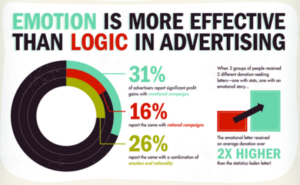Introduction
I always wondered why some websites consistently rank at the top of search results while others lay behind, even with great content. Then I got my answer which lies in User Experience (UX). It is an obvious fact that search engines become smarter and they have a huge impact on how users interact with websites. This means that a stellar UX is a very important factor for the profile of your website and success.
User Experience (UX)
Let’s explore what exactly UX, or User Experience is. Well, it refers to how a person feels when interacting with a system or service. You can say that It consists of everything from the design of the website to the way content is structured and navigated. More importantly, UX is about making sure users find your website not only useful but also enjoyable to use.
The key components of UX include:
Here are some of the key factors of UX, you should know such as :
Usability:
The first feature is its usability. How easily can users easily use your site and find what they need?
Accessibility:
Accessibility is how easily anyone can access your website. Is your site accessible to all users, including those with disabilities?
Interaction Design:
Of course, no one can deny the importance of the interaction design of any website. How do users interact with your site’s elements, such as buttons, forms, and links?
Google’s Emphasis on UX
We are already familiar with the fact that Google has always worked to give the best possible results for searchers. And when we see In recent years, this has meant a greater focus on UX. You have a clear example of The Page Experience Update. It introduced Core Web Vitals which are a set of specific factors that Google considers important in a webpage’s overall user experience. These include:
Largest Contentful Paint (LCP):
This helps to Measure loading performance. Let me tell you a fact For a good user experience, LCP should occur within 2.5 seconds of when the page first starts loading.
First Input Delay (FID):
This vital helps to Measure interactivity. Your Pages should have an FID of less than 100 milliseconds.
Cumulative Layout Shift (CLS):
This last vital Measure of visual stability. Always remember that your Pages should maintain a CLS of less than 0.1.
Key UX Factors Influencing Search Rankings
Let’s discover some major factors that highly influence search rankings:
Mobile-Friendliness
I was sitting in my vehicle and was looking outside, all I could see was everyone outside was just obsessed with their mobile phones. Did you know that more than half of global web traffic comes from mobile devices? This factor makes mobile-friendliness a top priority for search engines. And you should know that Google uses mobile-first indexing, which means it predominantly uses the mobile version of a website for indexing and ranking. Here are some tips to optimize your mobile UX:
- Use a responsive design that adapts to various screen sizes.
- Make sure buttons and links are large enough to be tapped easily.
- Always Minimize the use of pop-ups that can obstruct the view on smaller screens.
Page Speed
It is a fact that If your site takes too long to load, users are likely to abandon it, which can hurt your search rankings. But do not worry Improving page speed can lead to better user retention and higher search rankings and we will tell you how to improve your page speed:
- First thing always Compress images and use modern formats like WebP.
- Make sure to use browser caching to limit load times on repeat visits.
- Do not forget to Minimize JavaScript and CSS files to streamline page rendering.
Secure Browsing (HTTPS)
We cannot deny that Security is a very important aspect of UX. Have you known that Google has confirmed that HTTPS is a ranking signal, and users are trusting and engage with secure websites? Here is how you can implement HTTPS on your site:
- First, get an SSL certificate from a trusted certificate authority.
- Make sure to Install the certificate on your web server.
- Lastly, all elements of your site (including images and scripts) are served securely.
Intrusive Interstitials
We all get frustrated with pop-ups that cover the content we are trying to read. pretty annoying right? But you know what Google penalizes sites with intrusive interstitials that hinder user access to content, especially on mobile devices. How you can avoid this:
- Always Use pop-ups limitedly and make sure they are easy to close.
- You must go for less intrusive alternatives, like banners or in-line prompts.
- And make sure that important content is not hidden by interstitials.
Content and UX
Content is the base of UX. We will discuss how it impacts your webpage:
Readability:
I want you to Imagine landing on a webpage only to be greeted by a wall of text in tiny font. I know Chances are, you will leave almost immediately. The fact is Clear and accessible content is very important for keeping people engaged as well as guaranteeing they find value in what you are giving to them. Let’s explore how you can improve readability.
Font Size:
First, you need to work on the font size of your webpage. Strictly make sure that your text is large enough to read comfortably on all devices. According to my point of view go for a base font size of at least 16px.
Paragraph Length:
If I put myself in a user place I won’t like long paragraphs. Nobody wants to read long paragraphs as they make you bored. So what you can do is Break up long paragraphs into shorter ones to make your content easier to read. I would suggest you plan for no more than 3-4 sentences per paragraph.
Headings:
The next thing that needs your attention is headings. Always Use headings and subheadings to organize your content. This will improve readability .it also helps with SEO and makes it easier for search engines to understand the structure of your content.
Engagement Metrics
Let me tell you a fact Search engines pay close attention to how users interact with your site. Metrics like:
- Bounce rate
- Dwell time
- Pages per session
All above feature give you knowlege into user engagement. This in turn affects your search rankings. And why they matter so much here are the are reasons:
The first thing is metrics mattered a lot because of the high bounce rate. This indicates that users are leaving your site without interacting. This may signal to search engines that your content is not relevant and useful.
Dwell Time is also a very important metric. This measures how long a visitor stays on your site. Longer dwell times suggest that users find your content valuable.
And the last metric is Pages per Session. This metric indicates how many pages a visitor views in one session. More pages per session can imply a better process and content that keeps users interested.
You may think about how you can improve these metrics, consider these strategies:
- Always make useful content. Make sure your content is relevant, informative, and engaging.
- Remember to Make it easy for users to find related content and explore your site further.
- And lastly, Guide visitors to other relevant pages on your site to keep them engaged longer.
User-Centered Design Practices
User-centered design is very important as it is creating a website with your audience in mind. why it is so important to work on better user-centered design because It involves understanding user needs and behaviors and then designing solutions that meet those needs. This approach is important for delivering a positive user experience and improving search rankings.
Importance of User Research and Testing
Your first step to improving UX is Understanding your users. I would recommend you conduct research as Conducting user research helps you to understand what your audience wants and how they interact with your site. This can include:
Surveys and Questionnaires:
The first step is to Directly ask your users about their experiences and what they would like to see improved.
Usability Testing:
The next thing is to Observe how real people use your site to identify pain points and areas for improvement.
Analytics Tools:
Always Use tools like Google Analytics to gather data on user behavior. You can gather info such as from pages that are most visited and where users drop off.
Conclusion
In this blog we have explored the relationship between UX and search rankings which is very important .when prioritize user experience, you create a more engaging and accessible website which also improves your chances of ranking higher on search engines. When optimizing for mobile devices speeding up load times to improve readability and focusing on user-centered design, every aspect of UX plays a very important role in attracting and retaining visitors.
Lastly when a focus on UX is not just about climbing search rankings but it is about creating meaningful and enjoyable experiences for your users. And when you put users first, your ranking increases. I would recommend you start implementing these strategies today and watch as your search rankings rise and your users’ satisfaction grows.



